<Back to Index>
- Engineer Dugald Clerk, 1854
- Engineer and Inventor Karl Friedrich Benz, 1844
- Engineer James Atkinson, 1846
PAGE SPONSOR
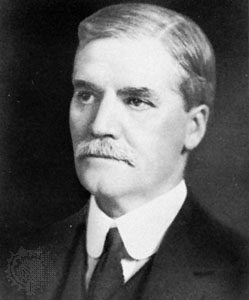
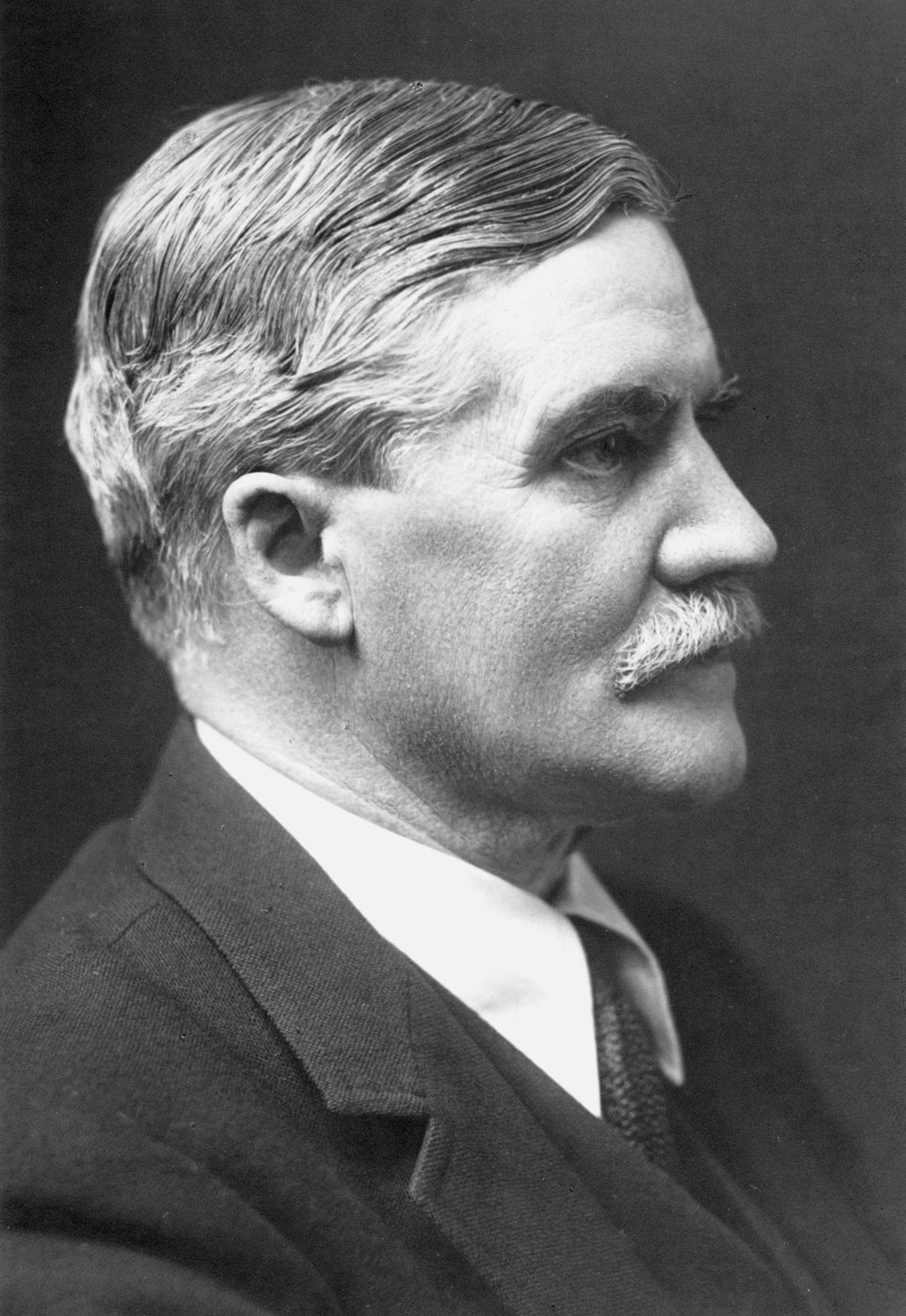
Sir Dugald Clerk KBE, FRS (1854, Glasgow – 1932, Ewhurst, Surrey) was a Scottish engineer who designed the world's first successful two - stroke engine in 1878 and patented it in England in 1881. He was a graduate of Anderson's University in Glasgow (now the University of Strathclyde), and Yorkshire College, Leeds (now the University of Leeds). He formed the intellectual property firm with George Croydon Marks, called Marks & Clerk.
Clerk's name is also rendered as Clark in the archive of his works in the University of Glasgow. Most other sources, including The Encyclopædia Britannica and official documents, list him under Clerk.
Dugald Clerk was the author of a comprehensive book covering the development of the oil and gas engine from its early inception, and including details of his own work in this area. The first edition was produced in 1886, and the notes here are taken from the 7th edition, revised and updated up to 1896.
Clerk began work on his own engine designs in October 1876. Up to this time the commercial engines available had been the Lenoir engine from 1860, which worked on a double - acting 2 - stroke cycle, but spent half of each stroke drawing gas into the cylinder. The Hugon engine was a slightly improved version, but both were quite inefficient (95 and 85 cubic feet of gas per HP hour respectively), neither used compression. The next commercial engine available (from 1867) was the Otto & Langen free piston engine, which used atmospheric pressure for the power stroke, and had half the gas consumption of the Lenoir and Hugon engines. It was in May 1876 that Otto developed his engine using the single - acting 4 - stroke cycle with compression in the cylinder. Clerk decided to develop an engine using compression, but with the 2 - stroke cycle, as he could see benefit to weight and smoothness of operation through having twice as many power strokes.
Clerk initially experimented with engines that "were identical to the Lenoir in idea, but with separate compression and a novel system of ignition", one of these was exhibited in July 1879. However it was not until the end of 1880 that he succeeded in producing the Clerk engine operating on the 2 - stroke cycle, which became the commercial product. Clerk states "The Clerk engine at present in the market was the first to succeed in introducing compression of this type, combined with ignition at every revolution; many attempts had previously been made by other inventors, including Mr. Otto and the Messrs. Crossley, but all had failed in producing a marketable engine. It is only recently that the Messrs. Crossley have made the Otto engine in its twin form and so succeeded in getting impulse at every turn."
In "Gas and Oil Engines", Clerk refers to the significant earlier gas engine patents of Barnett in 1838 and Wright in 1833.
In 1877 the Otto cycle was patented, immediately recognized to have a significant practical value. Clerk quickly followed with his concept of a two stroke engine of 1880, that would not infringe the Otto's patent (being a four stroke engine).
Clerk describes a Cambell engine as using his cycle, as follows: "It has two cylinders, respectively pump and motor, driven from cranks placed at almost right angles to each other, the pump crank leading. The pump takes in a charge of gas and air, and the motor piston overruns a port in the side of the cylinder at the out - end of its stroke to discharge the exhaust gases. When the pressure in the motor cylinder has fallen to atmosphere, the pump forces its charge into the back cover of the motor cylinder through a check valve, displacing before it the products of combustion through an exhaust port ; the motor piston then returns, compressing the contents of the cylinder into the compression space. The charge is then fired and the piston performs its working stroke. This is the Clerk cycle."
The Clerk engine uses automatic 'poppet' type valves for inlet air and gas (one with spring assistance, one without), and a port in the cylinder uncovered by the piston for the exhaust valve. References to a Clerk engine with slide valve may refer to the earlier experiments with a Lenoir type engine. The ignition is by carrying an external flame, using a modification of a method he developed in 1878.
Most engine designs that predated the Otto engine (and Clerk engine), such as those of de Rivaz, the Niépce brothers, Jean Joseph Etienne Lenoir, Samuel Morey, and others, did use two stroke engines, which were "natural" in the times of steam engine. Clerk's significant contribution was introducing Otto - styled compression to the two stroke engine, bringing its efficiency up-to-date (for the 1880s). Several manufacturers adopted the Clerk cycle in the short term, though commercial aspects such as patents on the 4 - stroke cycle were part of this. Many years later the 2 - stroke engine for large capacity diesels using a turbocharger or supercharger has become common, for example in ships and railway locomotives. With open crankshafts, and the advantages of higher power to weight ratio, these engines are closely aligned with Dugald Clerk's concepts, and the Clerk Cycle.
Clerk's engine was made of two cylinders - one working cylinder and an
additional cylinder to charge the cylinder, expelling the exhaust
through a port uncovered by the piston. Some sources consider this
additional cylinder the world's first supercharger. Clerk himself states that "It is not a compressing pump, and is not
intended to compress before introduction into the motor, but merely to
exercise force enough to pass the gases through the lift valve into the
motor cylinder, and there displace the burnt gases, discharging them
into the exhaust pipe." Hence sources recognize it instead as a "pumping
cylinder", pointing out that it did not actually compress the fuel - air
mixture, it simply moved the fresh mixture to the working cylinder to force out the gasses burnt previously.
Clerk's original design did not allow the construction of smaller engines, as it required the aforementioned additional pumping cylinder for each working cylinder. The crucial simplification of the concept, that made possible small yet powerful two stroke engines for mass markets, was patented by Joseph Day in 1894.
- Joseph Day, design of a three - port two - stroke engine
- Nash, design of a two - port two - stroke engine
- Robson, design of a two - stroke engine with under - piston scavenge
- Fielding, design of a uniflow two - stroke engine
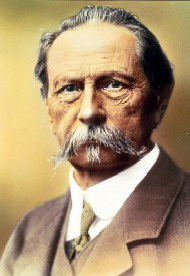
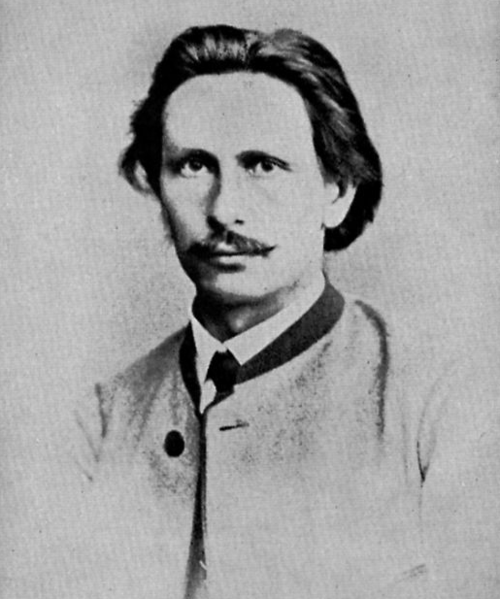
Karl Friedrich Benz (November 25, 1844 – April 4, 1929) was a German engine designer and car engineer, generally regarded as the inventor of the gasoline powered automobile, and together with Bertha Benz pioneering founder of the automobile manufacturer Mercedes - Benz. Other German contemporaries, Gottlieb Daimler and Wilhelm Maybach working as partners, also worked on similar types of inventions, without knowledge of the work of the other, but Benz patented his work first, and, subsequently patented all the processes that made the internal combustion engine feasible for use in an automobile. In 1879 his first engine patent was granted to him and in 1886 Benz was granted a patent for his first automobile.
Karl Benz was born Karl Friedrich Michael Vaillant, in Karlsruhe, Baden, which is part of modern Germany, to Josephine Vaillant and a locomotive driver, Johann George Benz, whom she married a few months later. When he was two years old, his father was killed in a railway accident, and his name was changed to Karl Friedrich Benz in remembrance of his father.
Despite living in near poverty, his mother strove to give him a good education. Benz attended the local Grammar School
in Karlsruhe and was a prodigious student. In 1853, at the age of nine
he started at the scientifically oriented Lyceum. Next he studied at the
Poly - Technical University under the instruction of Ferdinand Redtenbacher.
Benz had originally focused his studies on locksmithing, but eventually followed his father's steps toward locomotive engineering. On September 30, 1860, at age fifteen, he passed the entrance exam for mechanical engineering at the University of Karlsruhe, which he subsequently attended. Benz was graduated July 9, 1864 at nineteen.
During these years, while riding his bicycle, he started to envision concepts for a vehicle that would eventually become the horseless carriage.
Following his formal education, Benz had seven years of professional training in several companies, but did not fit well in any of them. The training started in Karlsruhe with two years of varied jobs in a mechanical engineering company.
He then moved to Mannheim to work as a draftsman and designer in a
scales factory. In 1868 he went to Pforzheim to work for a bridge
building company Gebrüder Benckiser Eisenwerke und Maschinenfabrik. Finally, he went to Vienna for a short period to work at an iron construction company.
In 1871, at the age of twenty - seven, Karl Benz joined August Ritter in launching the Iron Foundry and Mechanical Workshop in Mannheim, later renamed Factory for Machines for Sheet - metal Working.
The enterprise's first year went very badly. Ritter turned out to be unreliable, and the business's tools were impounded. The difficulty was overcome when Benz's fiancée, Bertha Ringer, bought out Ritter's share in the company using her dowry.
On July 20, 1872 Karl Benz and Bertha Ringer married. They had five children: Eugen (1873), Richard (1874), Clara (1877), Thilde (1882), and Ellen (1890).
Despite such business misfortunes, Karl Benz led in the development of new engines in the early factory he and his wife owned. To get more revenues, in 1878 he began to work on new patents. First, he concentrated all his efforts on creating a reliable gas two - stroke engine. Benz finished his two - stroke engine on December 31, 1878, New Year's Eve, and was granted a patent for it in 1879.
Karl Benz showed his real genius, however, through his successive
inventions registered while designing what would become the production
standard for his two - stroke engine. Benz soon patented the speed regulation
system, the ignition using white power sparks with battery, the spark
plug, the carburetor, the clutch, the gear shift, and the water
radiator.
Problems arose again when the banks at Mannheim demanded that Bertha and Karl Benz's enterprise be incorporated due to the high production costs it maintained. The Benzes were forced to improvise an association with photographer Emil Bühler and his brother (a cheese merchant), in order to get additional bank support. The company became the joint stock company Gasmotoren Fabrik Mannheim in 1882.
After all the necessary incorporation agreements, Benz was unhappy because he was left with merely five percent of the shares and a modest position as director. Worst of all, his ideas weren't
considered when designing new products, so he withdrew from that
corporation just one year later, in 1883.
Benz's lifelong hobby brought him to a bicycle repair shop in Mannheim owned by Max Rose and Friedrich Wilhelm Eßlinger. In 1883, the three founded a new company producing industrial machines: Benz & Company Rheinische Gasmotoren - Fabrik, usually referred to as, Benz & Cie. Quickly growing to twenty - five employees, it soon began to produce static gas engines as well.
The success of the company gave Benz the opportunity to indulge in his old passion of designing a horseless carriage. Based on his experience with, and fondness for, bicycles, he used similar technology when he created an automobile. It featured wire wheels (unlike carriages' wooden ones) with a four - stroke engine of his own design between the rear wheels, with a very advanced coil ignition and evaporative cooling rather than a radiator. Power was transmitted by means of two roller chains to the rear axle. Karl Benz finished his creation in 1885 and named it the Benz Patent Motorwagen.
It was the first automobile entirely designed as such to generate its own power, not simply a motorized - stage coach or horse carriage, which is why Karl Benz was granted his patent and is regarded as its inventor.
The Motorwagen was patented on January 29, 1886 as DRP-37435: "automobile fueled by gas". The 1885 version was difficult to control, leading to a collision with a wall during a public demonstration. The first successful tests on public roads were carried out in the early summer of 1886. The next year Benz created the Motorwagen Model 2, which had several modifications, and in 1887, the definitive Model 3 with wooden wheels was introduced, showing at the Paris Expo the same year.
Benz began to sell the vehicle (advertising it as the Benz Patent
Motorwagen) in the late summer of 1888, making it the first commercially
available automobile in history. The second customer of the Motorwagen
was a Parisian bicycle manufacturer Emile Roger,
who had already been building Benz engines under license from Karl Benz
for several years. Roger added the Benz automobiles (many built in
France) to the line he carried in Paris and initially most were sold
there.
Early customers could only buy gasoline from pharmacies that sold small quantities as a cleaning product. The early 1888 version of the Motorwagen had no gears and could not climb hills unaided. This limitation was rectified after Bertha Benz made her famous trip driving one of the vehicles a great distance and suggested to her husband the addition of another gear.
An important part in the Benz story is the first long distance automobile trip, where entrepreneurial Bertha Benz, supposedly without the knowledge of her husband, on the morning of August 5, 1888, took this vehicle on a 106 km (66 mi) trip from Mannheim to Pforzheim to visit her mother, taking her sons Eugen and Richard with her. In addition to having to locate pharmacies on the way to fuel up, she repaired various technical and mechanical problems and invented brake lining. After some longer downhill slopes she ordered a shoemaker to nail leather on the brake blocks. Bertha Benz and sons finally arrived at nightfall, announcing the achievement to Karl by telegram. It had been her intention to demonstrate the feasibility of using the Benz Motorwagen for travel and to generate publicity in the manner now referred to as live marketing. Today the event is celebrated every two years in Germany with an antique automobile rally. In 2008 Bertha Benz Memorial Route was officially approved as a route of industrial heritage of mankind, because it follows Bertha Benz's tracks of the world's first long distance journey by automobile in 1888. Now everybody can follow the 194 km of signposted route from Mannheim via Heidelberg to Pforzheim (Black Forest) and back.
Benz's Model 3 made its wide scale debut to the world in the 1889 World's Fair in Paris; about twenty - five Motorwagens were built between 1886 and 1893.
The great demand for stationary, static internal combustion engines forced Karl Benz to enlarge the factory in Mannheim, and in 1886 a new building located on Waldhofstrasse (operating until 1908) was added. Benz & Cie. had grown in the interim from 50 employees in 1889 to 430 in 1899.
During the last years of the nineteenth century, Benz was the largest automobile company in the world with 572 units produced in 1899.
Because of its size, in 1899, Benz & Cie. became a joint stock company with the arrival of Friedrich von Fischer and Julius Ganß, who came aboard as members of the Board of Management. Ganß worked in the commercialization department, which is somewhat similar to marketing in contemporary corporations.
The new directors recommended that Benz should create a less expensive automobile suitable for mass production. In 1893, Karl Benz created the Victoria, a two passenger automobile with a 2.2 kW (3.0 hp) engine, which could reach the top speed of 18 km/h (11 mph) and had a pivotal front axle operated by a roller - chained tiller for steering. The model was successful with 85 units sold in 1893.
The Benz Velo also participated in the first automobile race, the 1894 Paris to Rouen Rally.
In 1895, Benz designed the first truck in history, with some of the units later modified by the first motor bus company: the Netphener, becoming the first motor buses in history.
In 1896, Karl Benz was granted a patent for his design of the first flat engine. It had horizontally opposed pistons, a design in which the corresponding pistons reach top dead center simultaneously, thus balancing each other with respect to momentum. Flat engines with four or fewer cylinders are most commonly called boxer engines, boxermotor in German, and also are known as horizontally opposed engines. This design is still used by Porsche, Subaru, and some high performance engines used in racing cars. In motorcycles, the most famous boxer engine is found in BMW motorcycles, though the boxer engine design was used in many other models, including Zundapp, Wooler, Douglas Dragonfly, Ratier, Universal, IMZ-Ural, Dnepr, Gnome et Rhône, Chang Jiang, Marusho, and the Honda Gold Wing.
Although Gottlieb Daimler died in March 1900 — and there is no
evidence that Benz and Daimler knew each other nor that they knew about
each other's early achievements — eventually, competition with Daimler Motoren Gesellschaft
(DMG) in Stuttgart began to challenge the leadership of Benz & Cie.
In October 1900 the main designer of DMG, Wilhelm Maybach, built the
engine that would be used later, in the Mercedes - 35hp
of 1902. The engine was built to the specifications of Emil Jellinek
under a contract for him to purchase thirty - six vehicles with the
engine and for him to become a dealer of the special series. Jellinek
stipulated the new engine be named Daimler - Mercedes (for his
daughter). Maybach would quit DMG in 1907, but he designed the model and
all of the important changes. After testing, the first was delivered to
Jellinek on December 22, 1900. Jellinek continued to make suggestions
for changes to the model and obtained good results racing the automobile
in the next few years, encouraging DMG to engage in commercial
production of automobiles, which they did in 1902.
Benz countered with Parsifil, introduced in 1903 with a vertical twin engine that achieved a top speed of 37 mph (60 km/h). Then, without consulting Benz, the other directors hired some French designers. France was a country with an extensive automobile industry based on Maybach's creations. Because of this action, after difficult discussions, Karl Benz announced his retirement from design management on January 24, 1903, although he remained as director on the Board of Management through its merger with DMG in 1926 and, remained on the board of the new Daimler - Benz corporation until his death in 1929.
Benz's sons Eugen and Richard left Benz & Cie. in 1903, but Richard returned to the company in 1904 as the designer of passenger vehicles.
That year, sales of Benz & Cie. reached 3,480 automobiles, and the company remained the leading manufacturer of automobiles.
Along with continuing as a director of Benz & Cie., Karl Benz soon would found another company — with his son, Eugen — closely held within the family, manufacturing automobiles under another brand and using a French spelling variant of Benz's first name for the first initial of the privately held company.
In 1909, the Blitzen Benz was built in Mannheim by Benz & Cie. The bird - beaked vehicle had a 21.5 liter (1312 ci), 150 kW (200 hp) engine, and on November 9, 1909 in the hands of Victor Hémery of France, the land speed racer at Brooklands, set a record of 226.91 km/h (141.94 mph), said to be "faster than any plane, train, or automobile" at the time, a record that was not exceeded for ten years by any other vehicle. It was transported to several countries, including the United States, to establish multiple records of this achievement.
Karl Benz, Bertha Benz, and their son, Eugen, moved 10 km east of
Mannheim to live in nearby Ladenburg, and solely with their own capital,
founded the private company, C. Benz Sons (German: Benz Söhne) in 1906, producing automobiles and gas engines. The latter type was replaced by petrol engines because of lack of demand.
This company never issued stocks publicly, building its own line of automobiles independently from Benz & Cie., which was located in Mannheim. The Benz Sons automobiles were of good quality and became popular in London as taxis.
In 1912, Karl Benz liquidated all of his shares in Benz Sons and left the family held company in Ladenburg to Eugen and Richard, but he remained as a director of Benz & Cie.
During a birthday celebration for him in his home town of Karlsruhe
on November 25, 1914, the seventy year old Karl Benz was awarded an
honorary doctorate by his alma mater, the Karlsruhe University, thereby becoming — Dr. Ing. h. c. Karl Benz.
Almost from the very beginning of the production of automobiles, participation in sports car racing became a major method to gain publicity for manufacturers. At first, the production models were raced and the Benz Velo participated in the first automobile race: Paris to Rouen 1894. Later, investment in developing racecars for motorsports produced returns through sales generated by the association of the name of the automobile with the winners. Unique race vehicles were built at the time, e.g., the Benz, the first mid - engine and aerodynamically designed, Tropfenwagen, with a "teardrop" body introduced at the 1923 European Grand Prix at Monza.
In the last production year of the Benz Sons company, 1923,
three hundred and fifty units were built. During the following year,
1924, Karl Benz built two additional 8/25 hp units of the
automobile
manufactured by this company, tailored for his personal use, which he
never sold; they are still preserved.
The German economic crisis worsened. In 1923 Benz & Cie. produced only 1,382 units in Mannheim, and DMG made only 1,020 in Stuttgart. The average cost of an automobile was 25 million marks because of rapid inflation. Negotiations between the two companies resumed and in 1924 they signed an "Agreement of Mutual Interest" valid until the year 2000. Both enterprises standardized design, production, purchasing, sales, and advertising — marketing their automobile models jointly — although keeping their respective brands.
On June 28, 1926, Benz & Cie. and DMG finally merged as the Daimler - Benz company, baptizing all of its automobiles, Mercedes Benz, honoring the most important model of the DMG automobiles, the 1902 Mercedes 35 hp, along with the Benz name. The name of that DMG model had been selected after ten year old Mercédès Jellinek, the daughter of Emil Jellinek who had set the specifications for the new model. Between 1900 and 1909 he was a member of DMG's board of management and long before the merger Jellinek had resigned.
Karl Benz was a member of the new Daimler Benz board of management for the remainder of his life. A new logo was created, consisting of a three pointed star (representing Daimler's motto: "engines for land, air, and water") surrounded by traditional laurels from the Benz logo, and the brand of all of its automobiles was labeled Mercedes Benz. Model names would follow the brand name in the same convention as today.
The next year, 1927, the number of units sold tripled to 7,918 and the diesel line was launched for truck production. In 1928 the Mercedes - Benz SSK was presented.
On April 4, 1929, Karl Benz died at home in Ladenburg at the age of eighty - four from a bronchial inflammation. Until her death on May 5, 1944, Bertha Benz continued to reside in their last home. Members of the family resided in the home for thirty more years. The Benz home now has been designated as historic and is used as a scientific meeting facility for a nonprofit foundation, the Gottlieb Daimler and Karl Benz Foundation, that honors both Bertha and Karl Benz for their roles in the history of automobiles.
In 2011 a dramatized television movie about the life of Karl and Bertha Benz was made named Carl & Bertha which premiered on 11 May and was aired by Das Erste on 23 May. A trailer of the movie and a "making of" special were released on YouTube.
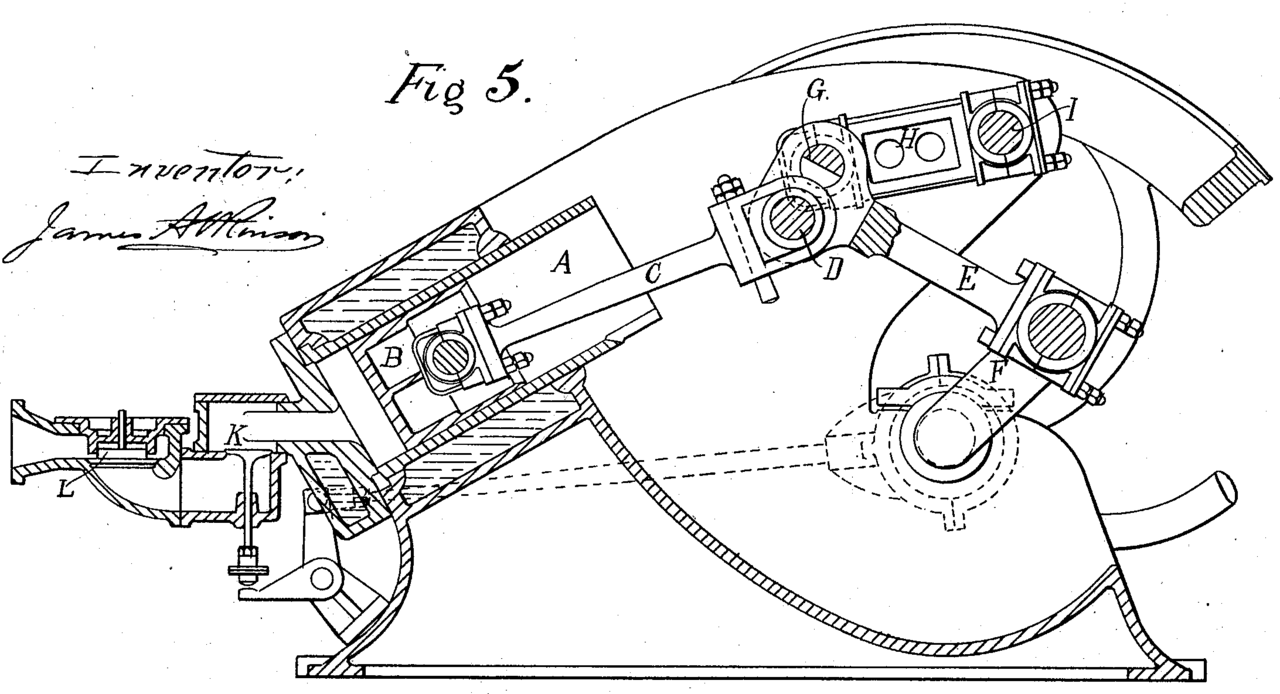
James Atkinson (1846–1914) of Hampstead was a British engineer who invented several engines with greater efficiency than the Otto cycle. The Atkinson cycle engines were named the "Differential 1882", "Cycle 1887" and "Utilite 1892". The best known of Atkinson's engines is the "Cycle 1887", patented in 1887. By use of variable engine strokes from a complex crankshaft, Atkinson was able to increase the efficiency of his engine, at the cost of some power, over traditional Otto-cycle engines. He was awarded the John Scott Medal of The Franklin Institute in 1889.